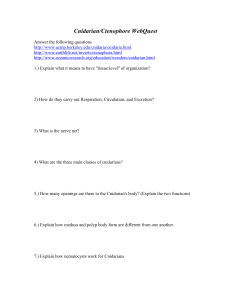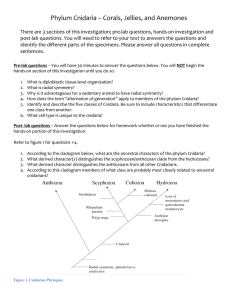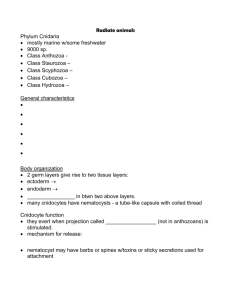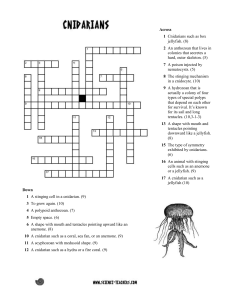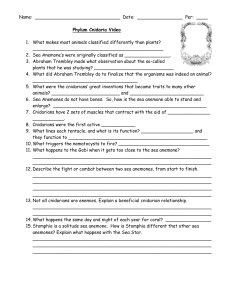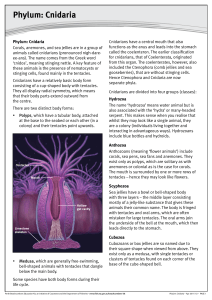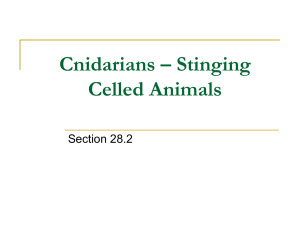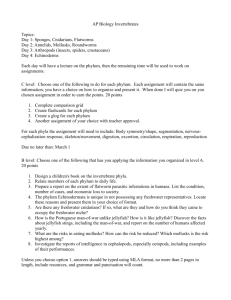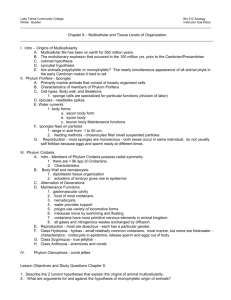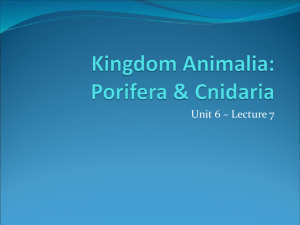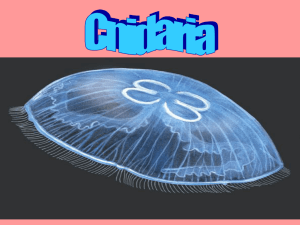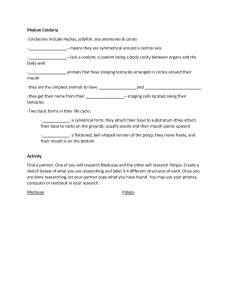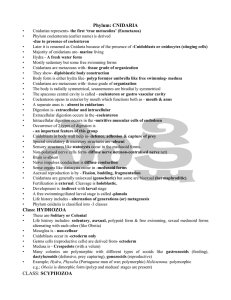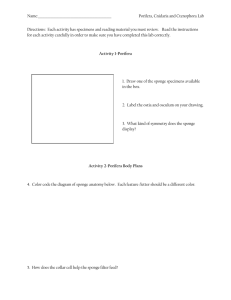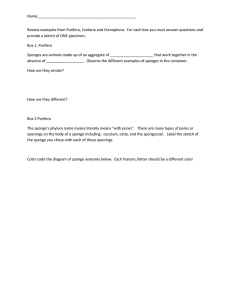Cnidaria Wksht key
advertisement
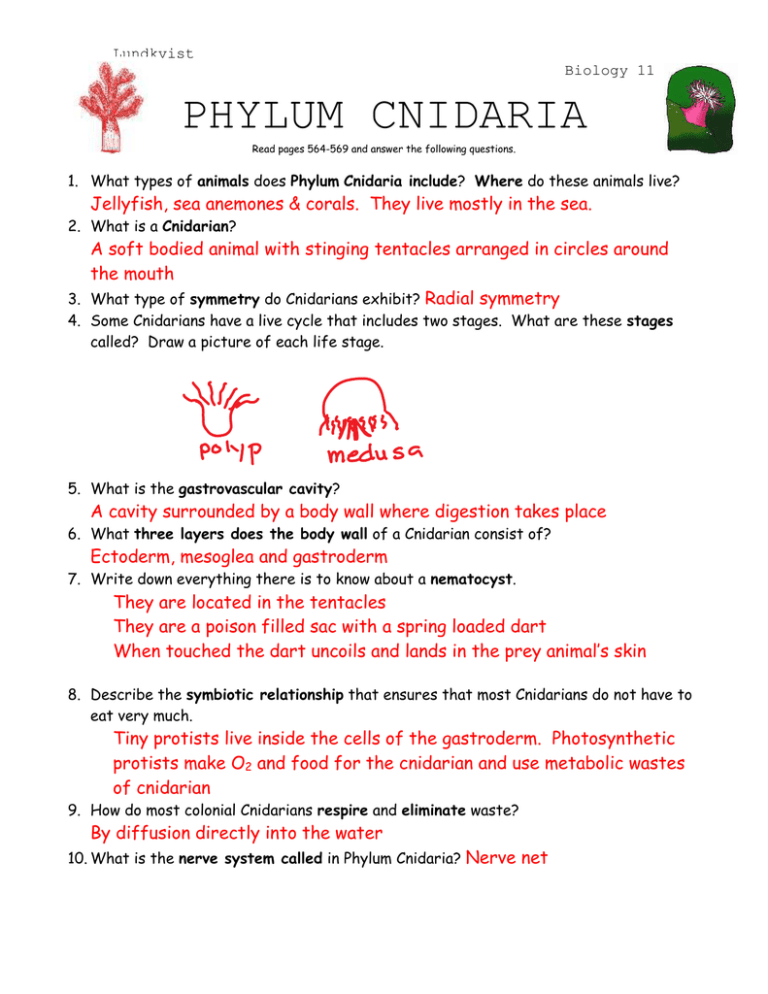
Lundkvist Biology 11 PHYLUM CNIDARIA Read pages 564-569 and answer the following questions. 1. What types of animals does Phylum Cnidaria include? Where do these animals live? Jellyfish, sea anemones & corals. They live mostly in the sea. 2. What is a Cnidarian? A soft bodied animal with stinging tentacles arranged in circles around the mouth 3. What type of symmetry do Cnidarians exhibit? Radial symmetry 4. Some Cnidarians have a live cycle that includes two stages. What are these stages called? Draw a picture of each life stage. 5. What is the gastrovascular cavity? A cavity surrounded by a body wall where digestion takes place 6. What three layers does the body wall of a Cnidarian consist of? Ectoderm, mesoglea and gastroderm 7. Write down everything there is to know about a nematocyst. They are located in the tentacles They are a poison filled sac with a spring loaded dart When touched the dart uncoils and lands in the prey animal’s skin 8. Describe the symbiotic relationship that ensures that most Cnidarians do not have to eat very much. Tiny protists live inside the cells of the gastroderm. Photosynthetic protists make O2 and food for the cnidarian and use metabolic wastes of cnidarian 9. How do most colonial Cnidarians respire and eliminate waste? By diffusion directly into the water 10. What is the nerve system called in Phylum Cnidaria? Nerve net Lundkvist Biology 11 11. Where is the nerve net located and what does it do exactly? It is concentrated around the mouth but it is spread around the entire body. It allows cnidarians to move 12. What is the function of a. statocysts? Balance- helps the animal stay upright b. ocelli? Detect the presence of light 13. How do Cnidarians move even though they don’t have muscles? Epidermal cells can change shape and act like muscles 14. Describe asexual reproduction in Phylum Cnidaria. Budding- begins as a swelling on the side of the anemone that grows into a complete polyp 15. What is a hermaphrodite? Have both male and female organs in the same body 16. Complete the table below: Class Scyphozoa Description Both polyp & medusa stage Branching sessile & colonial True Jellyfish Examples Hydra Portuguese man of war Lion’s mane Anthozoa Only have a polyp stage Sea Anemones Corals Hydrozoa 17. What is special about Portuguese man-of-war? It forms floating colonies that contain several different kinds of polyps 18. Describe the largest Jellyfish ever found. It was 3.6m in length with 30 cm long tentacles 19. To what class of Cnidaria do Corals belong? Anthozoa 20. Describe symbiotic relationships between sea anemonies and certain fish? How do they both benefit? 2. 1. Fish and shrimp are unaffected by Nematocysts (Clown fish) They get 5. Protection and in turn keep anemonies clean 6. 4. 3. Lundkvist Biology 11 21. How are coral reefs important to humans? They are homes for many food fish and they protect the shoreline. 22. Label the diagram:

